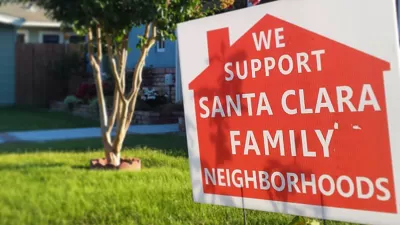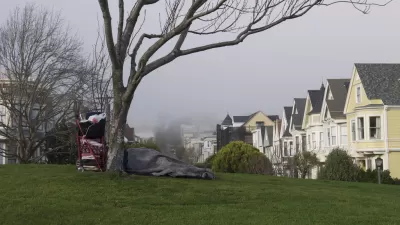With several years of contentious political debates, many surrounding homelessness, ravaging Seattle, a writer attempts to explain how the politics of city building got so heated.

Election campaigns are in full swing in Seattle, and Crosscut columnist Katie Wilson pauses to examine, "albeit speculatively," at the psychic forces setting the tone for politics in the city.
Wilson sets the infamous Ballard town hall of 2018—"the day Seattle Nice died"—as a defining moment for "enraged NIMBY" politics in the city, quickly connecting the movement to a core demographic (i.e., generational) experience:
Although I hope and believe this specimen is still rather rare, even in Ballard, it’s worth examining as a kind of archetype; NIMBY rage is the distillation of a set of feelings and opinions that also resonate, if less strongly, with a much broader swath of the population. This broader group is not all older, or all white, or all homeowners, but that’s their core demographic, and the archetypal enraged NIMBY is most definitely an older white homeowner. And this core demographic shares a core experience, which is in many respects a generational experience.
The core generational experience Wilson describes is one of a social contract, reached through numerous ill means, under threat by homelessness, soaring costs, and the looming environmental disaster of climate change. Millennials, more accustomed to the risks and threats of the era, have reacted differently than Baby Boomers to the changing times.
Wilson also calls out a few specifically loud voices in the ensuing debate, like People for Seattle and Moms for Seattle, the former led by former Mayor Tim Burgess.
FULL STORY: Adrift and afraid, Seattle's outraged NIMBY needs someone to blame

Planetizen Federal Action Tracker
A weekly monitor of how Trump’s orders and actions are impacting planners and planning in America.

Maui's Vacation Rental Debate Turns Ugly
Verbal attacks, misinformation campaigns and fistfights plague a high-stakes debate to convert thousands of vacation rentals into long-term housing.

Cuomo Is the Candidate of Both NIMBYs and Developers. What Gives?
In the New York City mayoral race, odd bedfellows align to preserve the housing status quo.

San Antonio and Austin are Fusing Into one Massive Megaregion
The region spanning the two central Texas cities is growing fast, posing challenges for local infrastructure and water supplies.

Charlottesville Temporarily Has No Zoning Code
A judge ordered the Virginia city to throw out its newly revised zoning code, leaving permitting for new development in legal limbo.

In California Battle of Housing vs. Environment, Housing Just Won
A new state law significantly limits the power of CEQA, an environmental review law that served as a powerful tool for blocking new development.
Urban Design for Planners 1: Software Tools
This six-course series explores essential urban design concepts using open source software and equips planners with the tools they need to participate fully in the urban design process.
Planning for Universal Design
Learn the tools for implementing Universal Design in planning regulations.
Heyer Gruel & Associates PA
JM Goldson LLC
Custer County Colorado
City of Camden Redevelopment Agency
City of Astoria
Transportation Research & Education Center (TREC) at Portland State University
Jefferson Parish Government
Camden Redevelopment Agency
City of Claremont





























